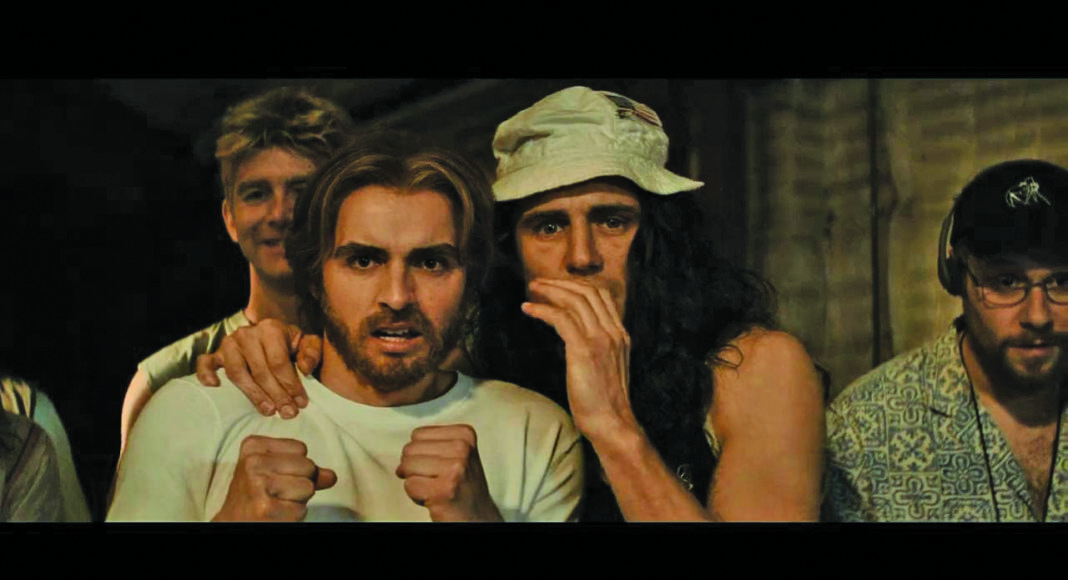“Fans of The Room are not like the fans of any other cult film,” says author/actor Greg Sestero, speaking on the phone from Paris, France. Earlier that evening, Sestero had attended a sold-out screening of The Disaster Artist, the Oscar-nominated film based on his book of the same name. The bestselling memoir describes the making of 2003’s The Room, dubbed by many the worst film of all time. Sestero, who grew up in Walnut Creek and Danville, played a key role in the film; his relationship with its writer/director and star, Tommy Wiseau, is at the heart of the book, and the James Franco-directed film based on it. The screening that night in France, Sestero says, was full of fans of The Room.
“Room fans,” he notes, “are very interactive and very clever, like Rocky Horror fans, but sometimes even more inventive.” Like The Rocky Horror Picture Show, The Room gained cult status, in part, through midnight screenings where audiences interact by shouting out lines, singing songs and hurling plastic spoons at the screen.
Spoons are kind of a thing in The Room. That and unison shouts of phrases like, “Because you’re a woman!” and, whenever a new character appears, “Who the fuck are you?”
“All of that is great,” Sestero says. “Fans who are passionate about a film share a common trait, a total willingness to be obsessive about some weird thing they love. And obsession is a good thing. I’m very thankful to obsessive people, because they made the unlikely success of The Room possible.”
“Speaking of success,” I mention, “I’ve heard that when you decided to write a book about your experiences on the set of The Room, you first studied a bunch of non-fiction books that went on to be made into Oscar-nominated films themselves.”
“That’s true,” he affirms, listing Ed Wood: Nightmare of Ecstasy, which became Tim Burton’s Ed Wood, and Between a Rock and a Hard Place, which became 127 Hours, plus The Pianist, The Social Network and others.
“I was imagining it as a film, as I was writing it,” he admits. “That was my goal. To write a first-rate book about the worst movie ever.”
I ask what he learned from reading those other books that he used in writing The Disaster Artist.
“For one thing, I learned that it’s more important to get wrapped up in really great characters than to get wrapped up in a lot of little historical details,” he answers. “What’s great about Ed Wood is that Ed Wood is just an interesting character. The book was more about his personal struggles, his cross-dressing and his desperate optimism than it was about the little technical details of his filmmaking.”
“So you decided to make it a relationship story, focusing on your off-the-wall friendship with Tommy Wiseau?” I ask.
“Exactly,” Sestero says. “Whatever else people say about him, Tommy is a great character. The Disaster Artist is not really about The Room. That just happened to be the vehicle for a story about a guy who believed in his dream more than anyone else around him.”
Given that the actual experience of making The Room was so frustrating and depressing, due largely to Wiseau’s outrageous on-set behavior and borderline abusive directorial style, Sestero also says that writing the book was something of a healing experience. “What a great challenge, right? To finally have some creative control over this story, and to turn it into a redeeming experience.”
“Have you considered writing a self-help book based on your relationship with Tommy?” I ask. “You should seriously consider that. You could name it something like ‘Tips on Surviving a ‘Disaster’ Friendship’ or something. I bet you’d actually have a lot to say about remaining friends with difficult people.”
“Maybe,” Sestero replies. “The biggest thing, I think, is just staying positive. It’s always trying to see the good side of a difficult person. It’s not easy, but it’s worth it if you can just let yourself be amused rather than irritated.”
That, Sestero has found, goes for difficult situations in general.
“Making that film,” he says, “I was put in so many situations where a lot of people would have quit. I just tried to view it all in terms of what was going for me instead of what was going against me. Looking back, it was all definitely worth it.”











